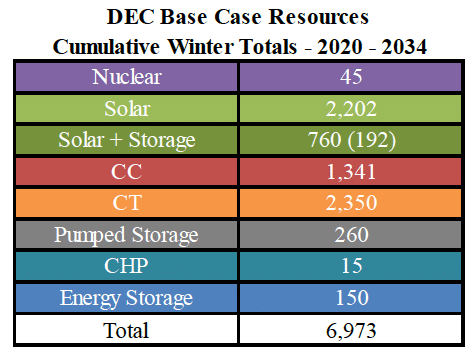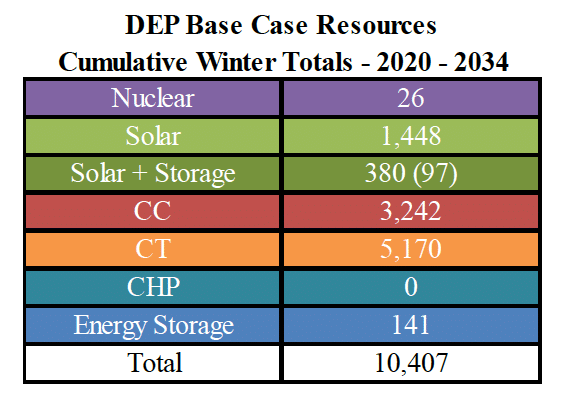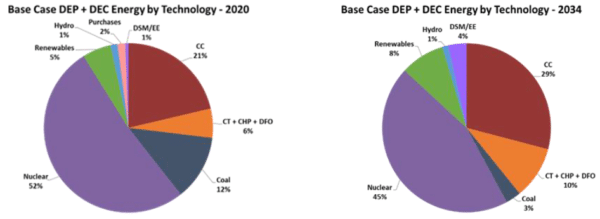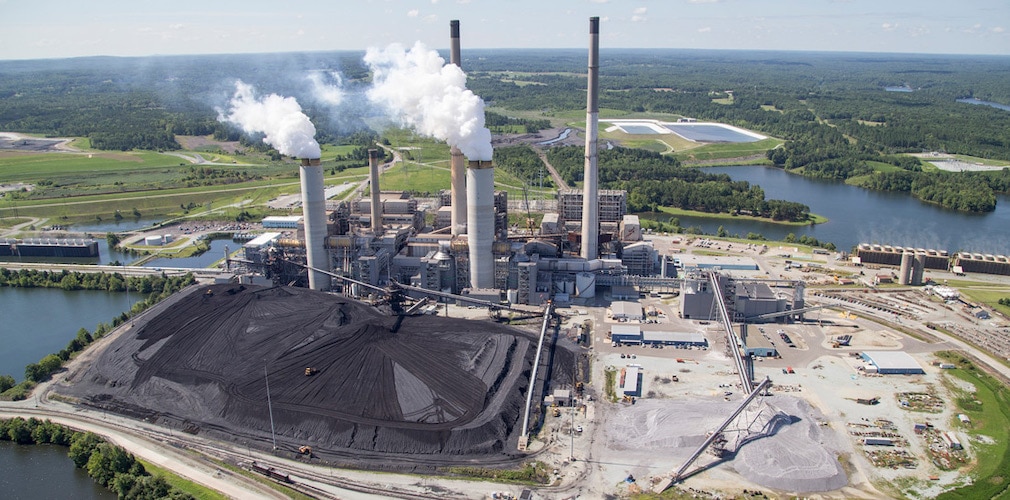Duke talks a good fight when it comes to the energy transition. The power company never fails to publicize the solar and energy storage that it is building, as well as to have CEO Lynn Good talk sustainability at the most important summits on the future of energy.
But when you look at the long-term plans for the utilities that it owns, it is a completely different story. Whether in Indiana or the Carolinas, the company is planning on shifting more to gas than renewable energy in coming decades, while extending the licenses of its nuclear power plants to unheard-of lengths and keeping uneconomic coal plants online for decades.
A week ago, North Carolina regulators pushed back on Duke’s 2018 Integrated Resource Plans (IRPs), including calling on the power company to actually consider retirement of uneconomic coal units and meeting the state’s goals for carbon reduction in its plans. However, the 2019 IRP updates released for Duke Energy Progress (DEP) and Duke Energy Carolinas (DEC) earlier this week show that the power company has not gotten the memo, and is planning to double down on gas while keeping said uneconomic coal units online for decades.
Solar and coal
Duke proposes to add a total of 4.8 GW of solar and solar plus storage over the next 15 years in the territories of Duke Energy Progress and Duke Energy Carolinas, but this is a small concession compared to the company’s plans for the future, or its existing fossil fleet
 Despite plans to shut down 881 MW of coal in its Darlington and Asheville coal plants next year, Duke is not planning to shut more coal units until 2024, despite some of these units being clearly uneconomic for its customers.
Despite plans to shut down 881 MW of coal in its Darlington and Asheville coal plants next year, Duke is not planning to shut more coal units until 2024, despite some of these units being clearly uneconomic for its customers.
Citing S&P data, Sierra Club estimates that power from the Allen Steam Station coal plant costs more than $65/megawatt-hour, but Duke does not plan to shut down the first units at Allen until 2024, and the remainder in 2028.
 “It stands in pretty stark contrast to what the commission just ordered a few weeks ago,” states Dave Rogers, the southeast director for Sierra Club’s Beyond Coal campaign.
“It stands in pretty stark contrast to what the commission just ordered a few weeks ago,” states Dave Rogers, the southeast director for Sierra Club’s Beyond Coal campaign.
There are also the large number of coal units that are not planned for retirement within the 15-year timeline of the IRP. This includes the 825 MW Cliffside Unit 6, which Duke commissioned in 2012 as one of the last new coal units to come online in the United States.
And such delays are hardly limited to North Carolina; Duke Energy Indiana’s latest IRP shows the power company planning to delay shutting down two of its coal plants until 2033 and not building any new solar until 2023.
Rush to gas
Duke’s delaying the retirement of its coal units is not exactly news. However, the 2019 IRPs also include 12.1 GW of new combined cycle and combustion turbine gas plants – up from the 9 GW the power company was planning in its 2018 IRPs.
Duke supports this rush to gas both by arguing that solar does little to assist with the winter peak, and by putting out estimates that show increased demand growth over previous projections. However, with electric demand flat to declining across the United States, it is not clear where this new demand will come from, or if Duke is merely building fossil fuel plants to crowd out new renewable energy.
All told, under Duke’s plans solar and other non-hydro renewables would only represent 13% of the capacity in DEC’s service area in 2034, up from 5% today, and 19% in the service area of DEP (up from 16% today).
But by energy delivered the contrast is even more stark; according to Duke’s base case it would only get 9% of its power from renewable energy in 2034, up from 6% today – despite the United States as a whole getting 9% of its electricity from wind and solar alone last year.

The plans were described as “medieval” by senior Sierra Club staff on Twitter.
Dave, this plan seems medieval. Next you’ll tell me their sustainability plan involves whale blubber. Maybe we will learn more this week.
— Bill Corcoran (@billcorcoran) September 4, 2019
It is extremely difficult to square these plans with North Carolina Governor Roy Cooper’s (D) executive order calling for 40% greenhouse gas reductions by 2025, or the state’s climate plan, and the intransigence of the state’s dominant utility company appears to be setting the stage for a showdown.
“This is further evidence that Duke is going to need to be forced to move to a 21st century energy and electricity system,” Rogers told pv magazine. “Left to their own devices, they have come up with a plan that is a catastrophe when dealing with climate change.”
This content is protected by copyright and may not be reused. If you want to cooperate with us and would like to reuse some of our content, please contact: editors@pv-magazine.com.









They want to get as many gas plants built so they can rate base them for the next 30 years even after they have to shut them down. This is the way of utility companies – make a profit for 20-30 years on something even if it shuts down and was stupid business decision.
What the PUC should do is say, “Okay, but the risk of these FF assets is all on your investors, you will not be able to rate base them.” See how quickly that “increased demand growth” suddenly disappears.